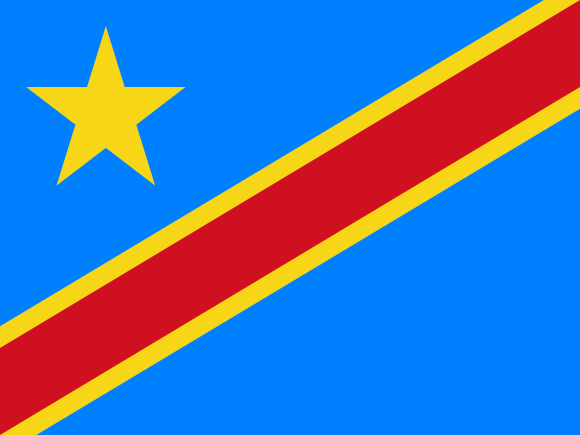At a glance
CDC supports HIV testing, treatment, and prevention services in Botswana through the U.S. President's Emergency Plan for AIDS Relief (PEPFAR). CDC and partners support TB prevention and control programs and integration of HIV/TB services.

Background
CDC has partnered with the Democratic Republic of Congo (DRC) since 2002 to respond to the country's HIV and TB epidemics. The collaboration focuses on scaling HIV prevention and treatment services, integrating HIV and TB treatment programs, and strengthening public health systems. Other focus areas include strengthening information systems, laboratory capacity, and health workforce development. CDC provides direct support to the Ministry of Health, including integrated HIV services in the Haut-Katanga and Kinshasa provinces. CDC supports laboratory diagnostics and quality management systems to meet DRC's need for viral load and emerging infectious disease monitoring.
Download CDC's DRC Fact Sheet
HIV and TB key data
HIV/AIDS
Estimated HIV Prevalence (Ages 15-49)
Estimated AIDS Deaths (Age≥15)
Estimated Orphans Due to AIDS
Reported Number Receiving Antiretroviral Therapy (Age≥15)
Tuberculosis (TB)
Estimated TB Incidence
TB Patients with Known HIV-Status who are HIV-Positive
TB Treatment Success Rate
Key activities and accomplishments
Antiretroviral treatment (ART) services
With CDC's support, the DRC strengthened the scope and quality of its ART services for adults and children. CDC also contributed significantly to the adoption of the Test and Start approach and new national HIV management guidelines.
Prevention of mother-to-child transmission
CDC supported development of the elimination of mother-to-child transmission plan, and rollout of the more effective Tenofovir-based regimen (TLD). CDC provides ART for pregnant women with HIV to improve their health and prevent mother-to-child transmission of HIV.
Orphans and vulnerable children
CDC and partners support the needs of children who have lost their parents and caregivers to HIV/AIDS. This includes providing safe, health, and stable environments and educational opportunities for these children.
Integrating Tuberculosis and HIV programs
CDC collaborates with partners in the DRC to address the HIV and TB epidemics by integrating treatment programs across both diseases. CDC helped to develop a TB infection control national plan and to promote TB preventive treatment. CDC also supports TB case identification to find and link patients with TB to treatment.
Viral load testing
CDC helped to increase laboratory capacity to support viral load testing in the DRC. This effort also helped scale access for early infant diagnosis in the country.
Prioritizing people who are at greater risk
CDC and partners provide HIV treatment and prevention services, including for people who are at greater risk for HIV infection.
Resources
Support for CDC's global HV and TB efforts.
Our success is built on the backbone of science and partnerships.
